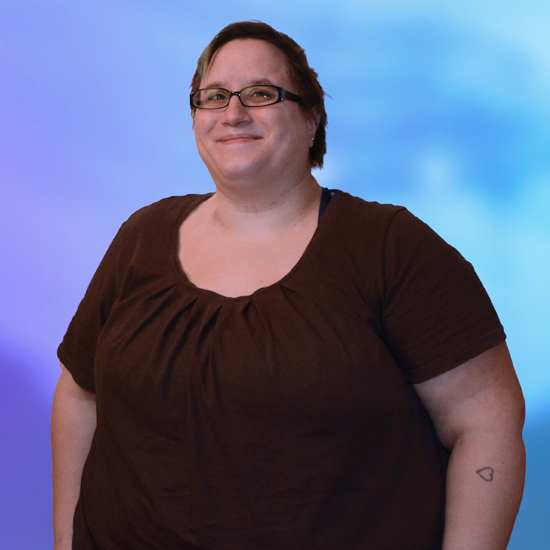- Leter from Dr. Julie Brisset (Principal Investigator of the Arecibo Observatory)13 Sep, 2022
- Arecibo Deputy Principal Scientist to Explore the Cosmos with the JWST02 Sep, 2022
- Letter from the Director22 Aug, 2022
- Piercing through the Clouds of Venus with Arecibo Radar17 Aug, 2022
- Summer greetings from the Facilities and Operations Team!17 Aug, 2022
- Arecibo Observatory at the Small Bodies Assessment Group12 Aug, 2022
- Meet the 2022 Arecibo Observatory REU students!11 Aug, 2022
- Meet Luis R. Rivera Gabriel, Research Intern in the Planetary Radar Group09 Aug, 2022
- Updates from the 2022 CEDAR Workshop in Austin, TX09 Aug, 2022
- Insights into the AAS Conference from AO Analyst Anna McGilvray08 Aug, 2022
- American Astronomical Society’s 240th Meeting: Plenary Lecture Building the Future of Radio Science with the Arecibo Observatory by Dr. Héctor Arce. 28 Jul, 2022
- TRENDS 202227 Jul, 2022
- Advancing IDEA in Planetary Science 27 Jul, 2022
- The Arecibo Observatory: An Engine for Science and Scientists in Puerto Rico and Beyond27 Jul, 2022
- Cryogenic Frontend work for the 12m telescope entering phase II21 Jul, 2022
- Remote Optical Facility Updates20 Jul, 2022
AO Features: Former AO Postdoctoral Researcher Kristen Jones
Byadmin30 June 2020 Astronomy
 Dr. Kristen Jones was a postdoctoral researcher at the Arecibo Observatory from September 2016 - August 2019, but her connection with AO started long before then.
“I had been an REU student at the observatory 10 years before my postdoc,” Dr. Jones stated, referring to the National Science Foundation’s Research Experience for Undergraduates (REU) program. “Data from that project were the basis for a paper I published in 2018.”
Dr. Kristen Jones was a postdoctoral researcher at the Arecibo Observatory from September 2016 - August 2019, but her connection with AO started long before then.
“I had been an REU student at the observatory 10 years before my postdoc,” Dr. Jones stated, referring to the National Science Foundation’s Research Experience for Undergraduates (REU) program. “Data from that project were the basis for a paper I published in 2018.”
Returning to AO as a postdoctoral researcher was an exciting opportunity for Dr. Jones. “Getting a chance to work at Arecibo was a treat - there were so many experts with knowledge that I could work with when I first arrived. And of course the telescope itself is unparalleled for astronomy and planetary defense,” she expressed. While working at the observatory, Dr. Jones split her time between research and performing support work for the Very Long Baseline Interferometry (VLBI) observations and more general astronomy science support for AO users.
“AO is the largest dish in the Very Long Baseline Array and the European VLBI Network, and is essential for high-sensitivity VLBI observations. Its position on the globe also provides coverage for a unique portion of the UV-plane,” she explained. Dr. Jones also organized a rehaul and update of the VLBI equipment to make the Arecibo Observatory, an essential telescope for the observations, more compatible with the modern VLBI networks. Dr. Jones’ research concentrates on the interplay between an Active Galactic Nucleus (AGN) and its host galaxy environment. “At Arecibo, I focused on the gaseous contents of the more-common, low radio luminosity AGN, using AO to detect faint neutral hydrogen and formaldehyde as tracers of different scale environments within the host galaxies of these AGN,” she explained.
Now a postdoctoral researcher at the University of Kansas Department of Physics and Astronomy, Dr. Jones is actively researching the evolution of galaxies within galaxy clusters. “I am still using Arecibo data as a foundation for my AGN-host galaxy connection research. The current phase of this research requires high-resolution followup to AGN host galaxies that have complex HI absorption features detected with AO.”
“I am still using Arecibo data as a foundation for my AGN-host galaxy connection research. The current phase of this research requires high-resolution followup to AGN host galaxies that have complex HI absorption features detected with AO.” - Dr. Kristen M. Jones, Postdoctoral researcher at the University of Kansas Department of Physics and Astronomy
In 2018, management of the observatory was transitioned to the consortium of the University of Central Florida, Yang Enterprises, Inc., and the Universidad Ana G. Méndez. There were significant changes in the staff during that transition. “I certainly had the unique opportunity of being the most senior astronomer while also being a postdoc, but it was a very efficient way to learn about the complexities involved in running an observatory,” Dr. Jones reflected on the experience. She was also working at the observatory when Hurricane Maria devastated the island of Puerto Rico. “One of the things I'll never forget is watching the Puerto Rican community come together after Hurricane Maria. It gives me hope for the future of the world.”
Dr. Jones summed up her time at AO as “an interesting challenge at one of the greatest institutions on Earth.” As a final note to all potential telescope users, including those who would like to use the Arecibo Observatory to study the universe, Dr. Jones had encouraging words. “Don't be afraid to apply for telescope time - there's a lot of support structures in place to help new observers, and you'll never learn as much as you do when you plan, take, and reduce the data yourself!”
|
Article written by Dr. Tracy Becker - AO Collaborator / SwRI Research Scientist
Contact: tbecker@swri.edu |
Head of the Astronomy Dept. |
Keywords: arecibo, observatory,vlbi, jones, post, doctoral, researcher, AGN, Kansas , Very Long Baseline Array

